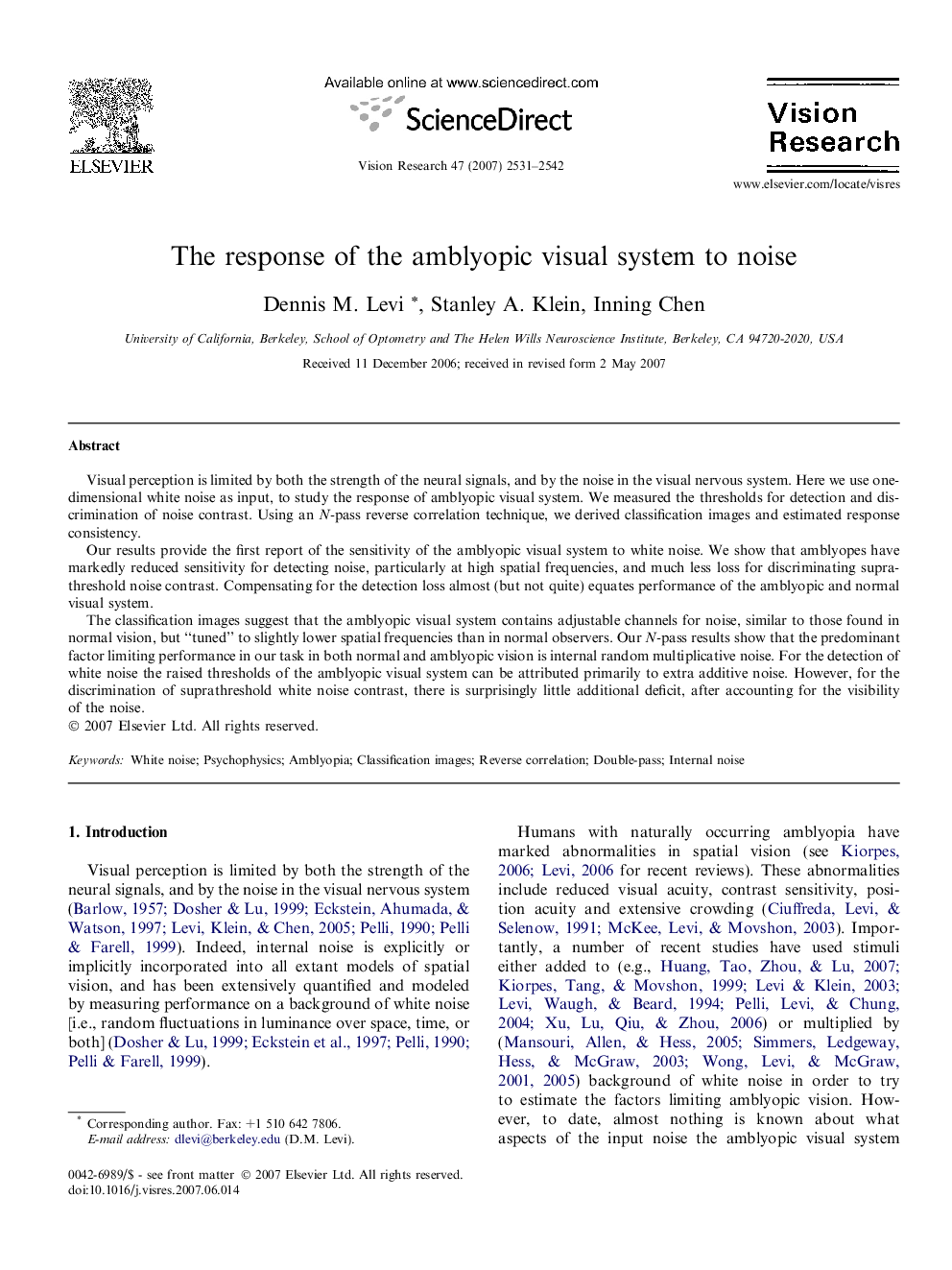| Article ID | Journal | Published Year | Pages | File Type |
|---|---|---|---|---|
| 4035133 | Vision Research | 2007 | 12 Pages |
Abstract
The classification images suggest that the amblyopic visual system contains adjustable channels for noise, similar to those found in normal vision, but “tuned” to slightly lower spatial frequencies than in normal observers. Our N-pass results show that the predominant factor limiting performance in our task in both normal and amblyopic vision is internal random multiplicative noise. For the detection of white noise the raised thresholds of the amblyopic visual system can be attributed primarily to extra additive noise. However, for the discrimination of suprathreshold white noise contrast, there is surprisingly little additional deficit, after accounting for the visibility of the noise.
Keywords
Related Topics
Life Sciences
Neuroscience
Sensory Systems
Authors
Dennis M. Levi, Stanley A. Klein, Inning Chen,
